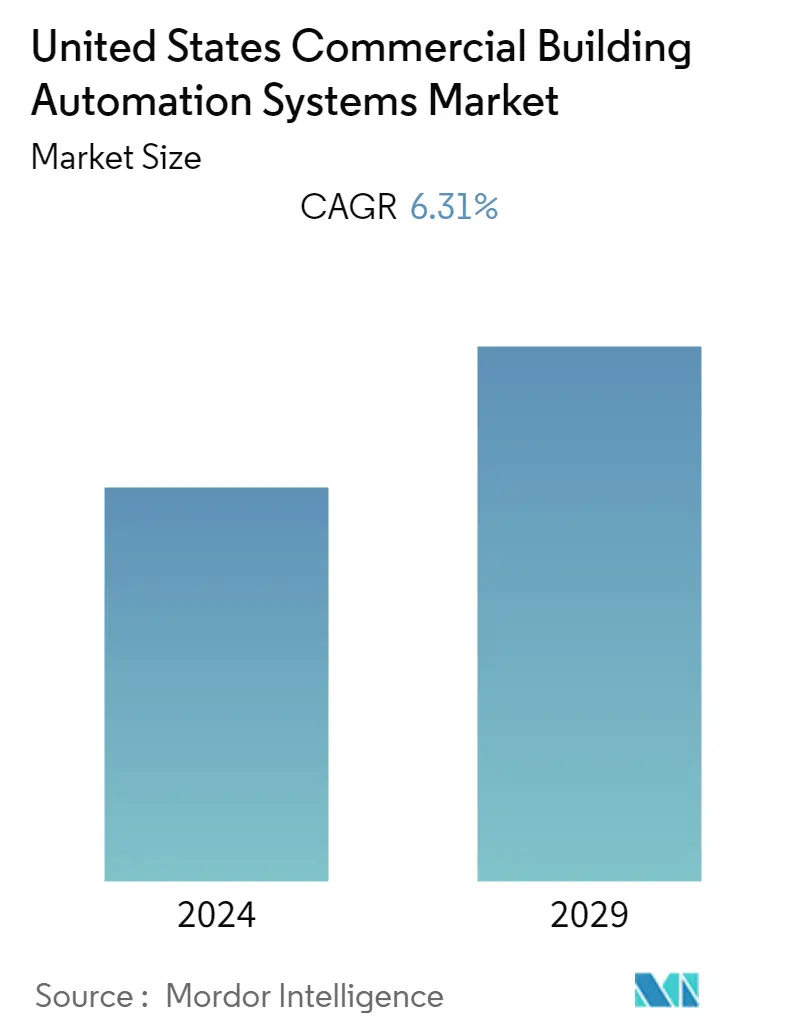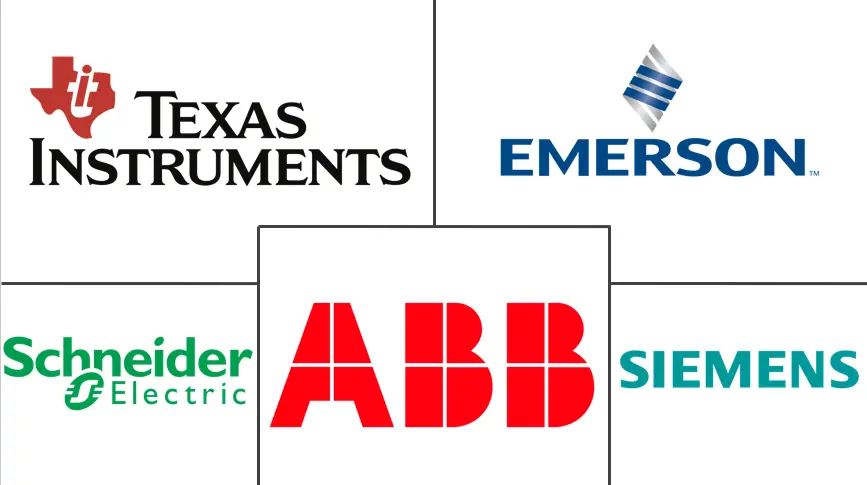Market Size of United States Commercial Building Automation Systems Industry

| Study Period | 2019 - 2029 |
| Base Year For Estimation | 2023 |
| Forecast Data Period | 2024 - 2029 |
| Historical Data Period | 2019 - 2022 |
| CAGR | 6.31 % |
| Market Concentration | Medium |
Major Players
*Disclaimer: Major Players sorted in no particular order |
Need a report that reflects how COVID-19 has impacted this market and its growth?
US Commercial Building Automation Systems Market Analysis
The US commercial building automation systems market was valued at USD 4.75 billion in 2020, and it is expected to reach USD 6.63 billion by 2026, registering a CAGR of 6.31% over the period of 2021-2026. Building automation systems connect and integrate different facility technologies, including HVAC, surveillance, lighting, and security, through information flow to a monitoring point. The requirement for energy management and the growing emphasis on overcoming utility costs continue to drive the adoption of building automation systems in the commercial sector. In the United States, most commercial buildings are equipped with these solutions.
- As buildings become more infused with IT and networking technology, building managers and security professionals are becoming aware of the risk of smart building security. Financial services institutions and other industries are potentially valuable targets from the hacker's perspective, and they should prioritize smart building security. Hence, such trends would drive the demand for intelligent security systems solutions.
- According to the New York State Energy Research and Development Authority, enabling real-time energy management systems and smart technologies could reduce costs by an average of 15% and increase the bottom line by creating an environment that encourages employee productivity and reduces energy waste, according to the New York State Energy Research and Development Authority (NYSERDA).
- Further, the market factor which is challenging the growth is the increasing office vacancy. According to the National Association of Realtors, the office vacancy rates in the United States witnessed a significant increase in 2020. The decline of office spaces, thus, negatively affects building automation systems growth.
- Moreover, with the COVID-19 impact, multiple energy management software providers extend their services beyond energy management systems by building health assessment solutions. For instance, in May 2020, Honeywell launched an integrated set of solutions for helping commercial building owners improve the health of their building environments and energy efficiency. These solutions further help building owners operate more cleanly and safely and comply with the social distancing policies.
